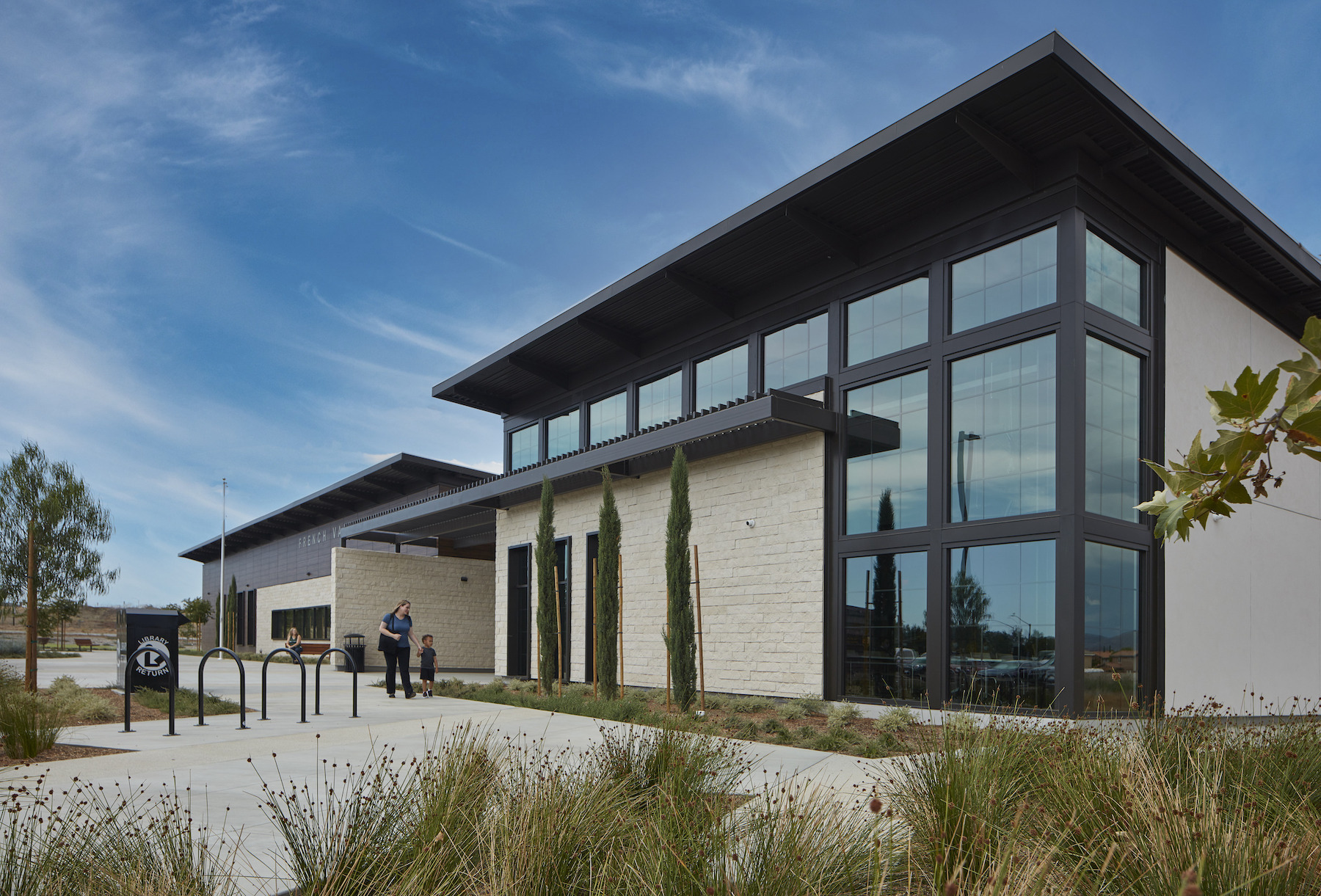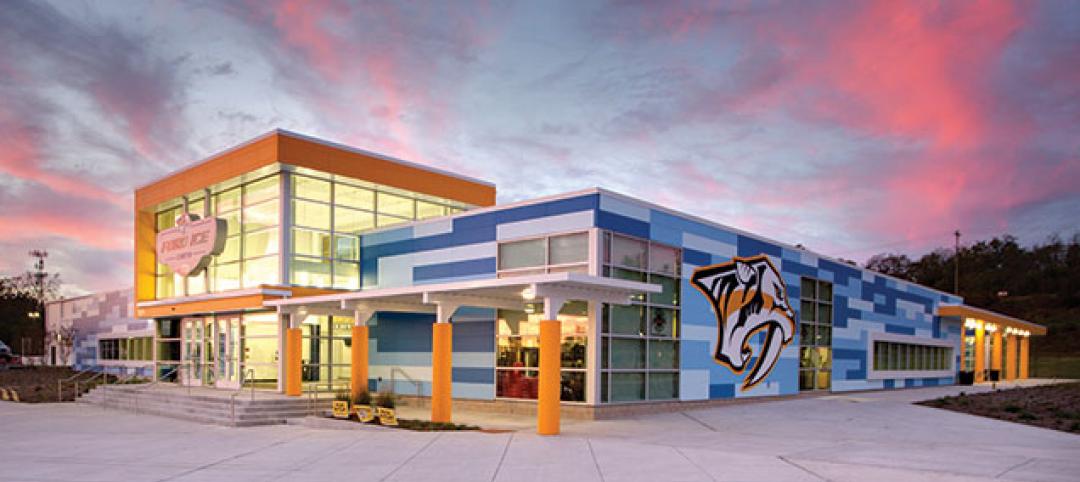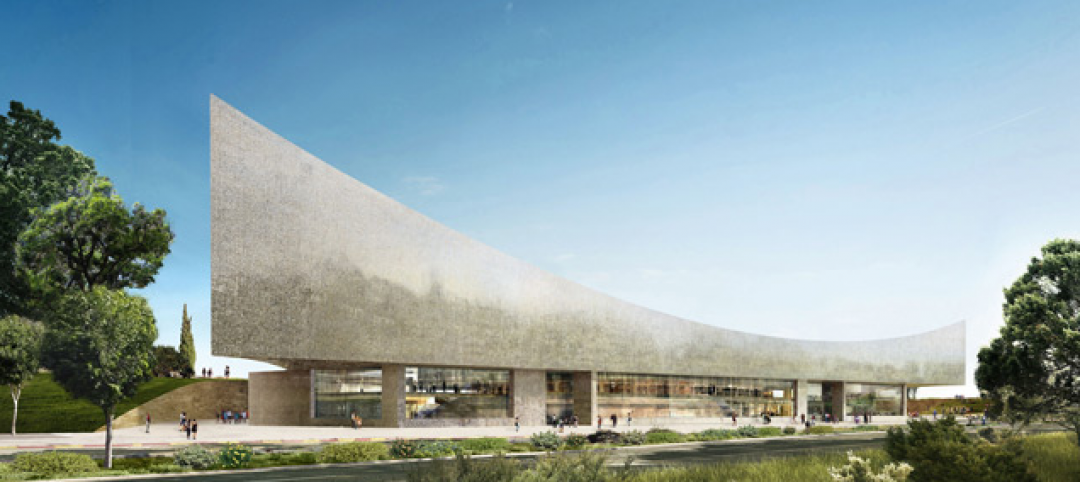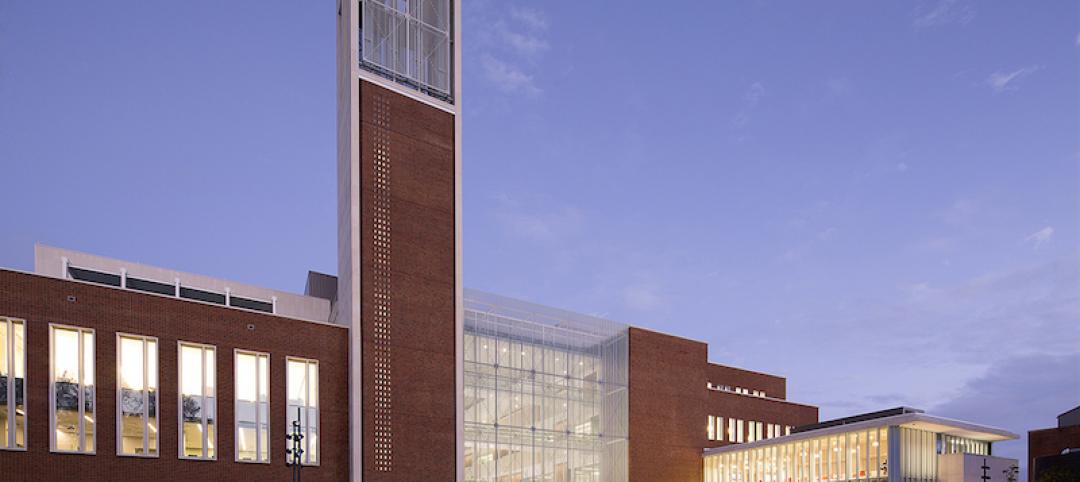Over the summer, a building team that included CannonDesign and McCarthy Building Companies completed three new libraries in Riverside County, Calif., that were built simultaneously in just 20 months under a $46 million public-private partnership contract that included a nonprofit specializing in funding P3 projects.
The three libraries—in Desert Hot Springs, Menifee, and French Valley—are now owned by Community Facility Public Private Partnerships (CFP3), a 501(c)(3) nonprofit that financed this project via tax-exempt bonds. Over the course of CFP3’s ownership contract, which can run up to 30 years, the County expects to save $25 million in debt service, operations, and maintenance costs. The installation of solar panels alone is expected to save $600,000.
As early as 2014, Riverside County—the fourth most-populous county in the state and the 10th most-populous in the U.S.—realized that its library system wasn’t keeping up with its growth. For example, at the time its existing 10,500-sf library in Menifee was serving 350,000 patrons. And that library’s location near a major roadway excluded expansion, according to a white paper about this project that CFP3 has published.
Back in the 1970s, the County’s Board of Supervisors approved the dedication of 1% of its general property tax for library services. But that wasn’t enough to build and maintain newer, larger branches.
P3 PRECEDENTS
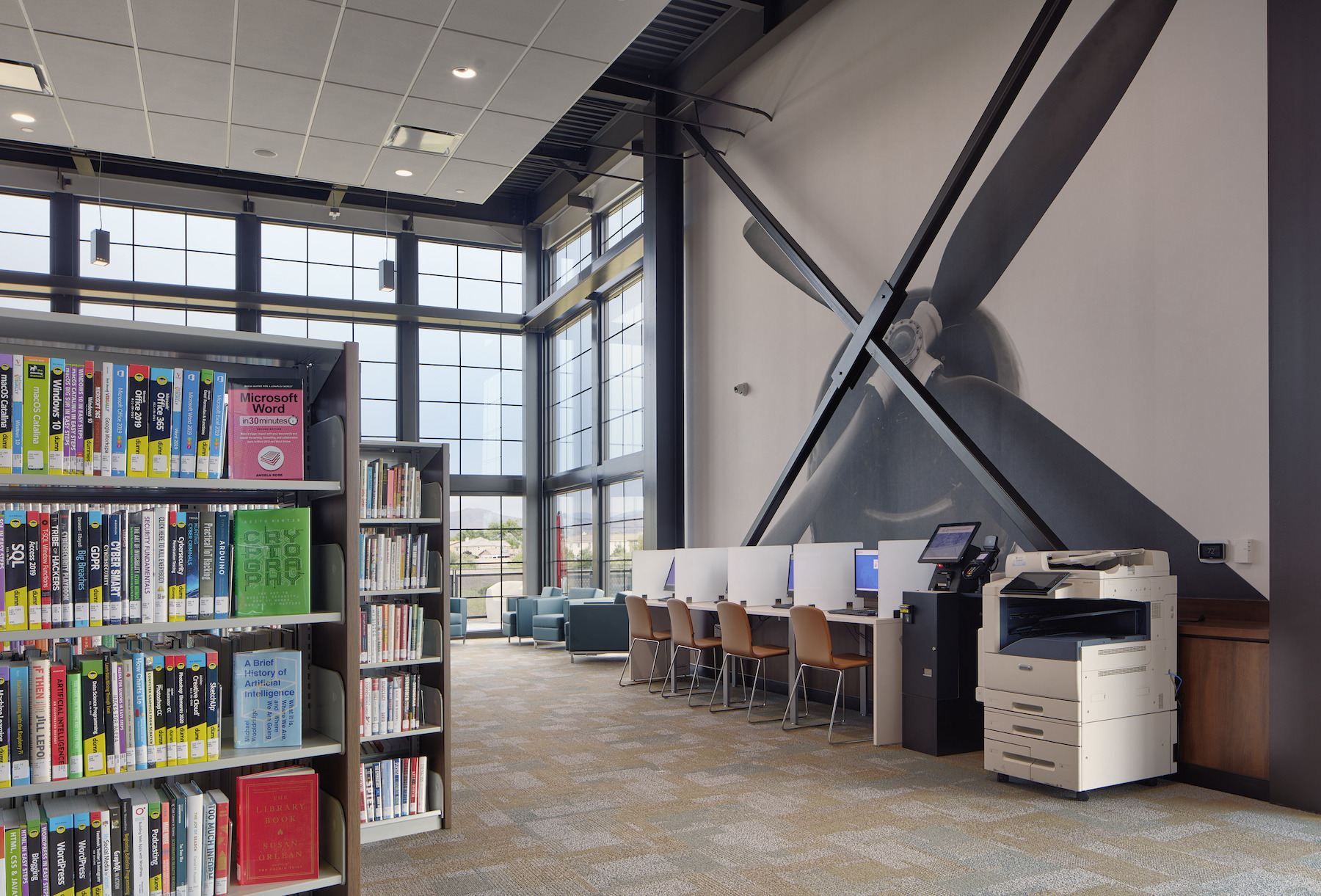
Prior to its library contract, the County had done about 15 P3s for different building types that covered 1 million sf and $600 million of property. To envision how many new libraries it needed, the County’s Office of Economic Development, in partnership with Library Systems and Services (which since the 1990s had operated Riverside’s library system), hired Group 4, a South San Francisco firm that specializes in project planning for libraries and community centers.
In 2018, the Riverside County Library System created an RFP for three new libraries, and received a dozen proposals. The County, which approved this project a year later, determined that the best, and least expensive, course of action would be to hire one team for all three projects under a P3 contract structure.
There were several advantages to taking this route, not the least being that the project could move forward without as many public hearings, procurement protocols, and referendums that can add months to scheduling. And because CFP3 is a nonprofit, it would not be saddled with property taxes as the libraries’ owner. The interest it charged the County for the cost of the project, at between 3% and 3.5%, was less than half of the return on equity a private P3 entity would have expected.
WHAT PARTNERS BROUGHT TO THE TABLE

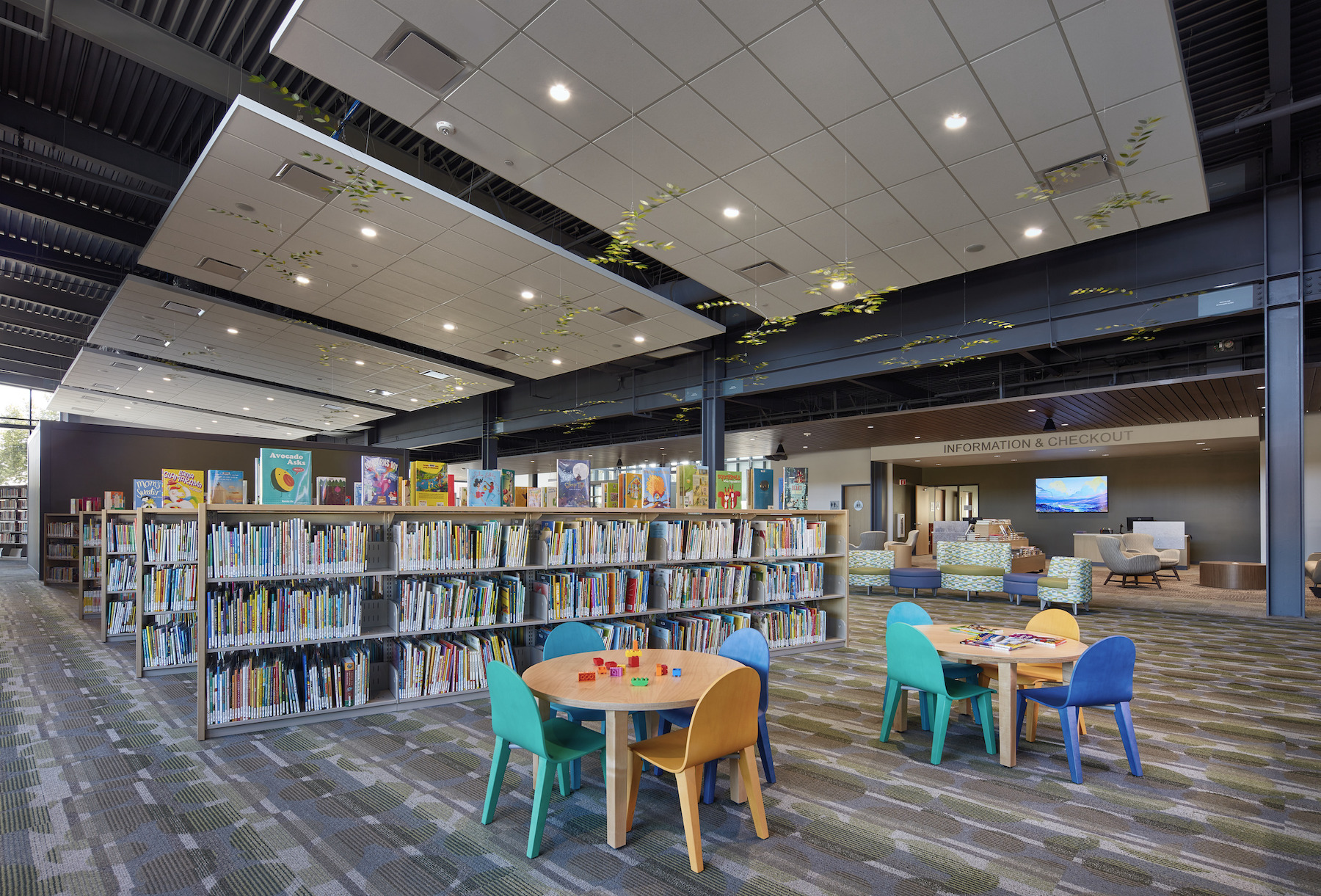
The partners in this P3 included Omni West Group, a development and property management firm, that came up with the libraries’ operational budget. CannonDesign created the blueprints for all three libraries that, while having different layouts, share similar attributes like children’s areas, tech centers, and community spaces.
McCarthy, which served as this project’s general contractor, was brought on board in part for its long-time relationships with local subcontractors, which prevented manpower-shortage delays. McCarthy assigned one project manager to monitor all three builds. CFP3 calculates that the design and construction of the libraries accounted for 20% of the total cost, with the rest going toward maintenance and operations.
During construction, there were some community concerns about the 25,000-sf library in French Valley, which opened July 31 and is the only one of the three located in a residential neighborhood. CFP3 states that these concerns were resolved with meetings and virtual fly-throughs of the building.
The new Menifee library opened July 24 at 20,000 sf, and was built to be an anchor for a larger retail development. The Desert Hot Springs library—the first of the three to open, on June 26—is 15,500 sf, and replaces a library that was only around one-fifth that size. “This library is a wonderful anchor for the community,” says Matthew Greiner, AIA, NCARB, Senior Vice President at CannonDesign. “It’s a home base for the wonderful people who live here. It’s where so many bright ideas and futures will be launched.”
Related Stories
Sponsored | Cladding and Facade Systems | Mar 24, 2015
Designers turn a struggling mall into a hub of learning and recreation
Architects help Nashville government transform a struggling mall into a new community space.
Retail Centers | Mar 10, 2015
Retrofit projects give dying malls new purpose
Approximately one-third of the country’s 1,200 enclosed malls are dead or dying. The good news is that a sizable portion of that building stock is being repurposed.
| Jan 2, 2015
Construction put in place enjoyed healthy gains in 2014
Construction consultant FMI foresees—with some caveats—continuing growth in the office, lodging, and manufacturing sectors. But funding uncertainties raise red flags in education and healthcare.
| Dec 29, 2014
Spherical reflectors help spread daylight throughout a college library in Portland, Ore. [BD+C's 2014 Great Solutions Report]
The 40,000-sf library is equipped with four “cones of light,” spherical reflectors made from extruded aluminum that distribute daylight from the library’s third floor to illuminate the second. The innovation was named a 2014 Great Solution by the editors of Building Design+Construction.
| Dec 28, 2014
AIA course: Enhancing interior comfort while improving overall building efficacy
Providing more comfortable conditions to building occupants has become a top priority in today’s interior designs. This course is worth 1.0 AIA LU/HSW.
| Nov 10, 2014
Herzog & De Meuron unveils plan for National Library of Israel
The library’s new home will be a completely new building in Jerusalem, and will combine the functions of a central research center, a venue for indoor and outdoor cultural and educational activities, and a place for digital experience.
| Oct 16, 2014
Report: How to keep public libraries relevant in a digital age
Public libraries will avoid being relegated to the scrap heap of history in a digital age as long as they continue to serve as platforms for learning, creativity, and innovation that strengthen their communities, according to a new Aspen Institute report.
| Oct 16, 2014
Perkins+Will white paper examines alternatives to flame retardant building materials
The white paper includes a list of 193 flame retardants, including 29 discovered in building and household products, 50 found in the indoor environment, and 33 in human blood, milk, and tissues.
| Oct 15, 2014
Harvard launches ‘design-centric’ center for green buildings and cities
The impetus behind Harvard's Center for Green Buildings and Cities is what the design school’s dean, Mohsen Mostafavi, describes as a “rapidly urbanizing global economy,” in which cities are building new structures “on a massive scale.”
| Oct 12, 2014
AIA 2030 commitment: Five years on, are we any closer to net-zero?
This year marks the fifth anniversary of the American Institute of Architects’ effort to have architecture firms voluntarily pledge net-zero energy design for all their buildings by 2030.


